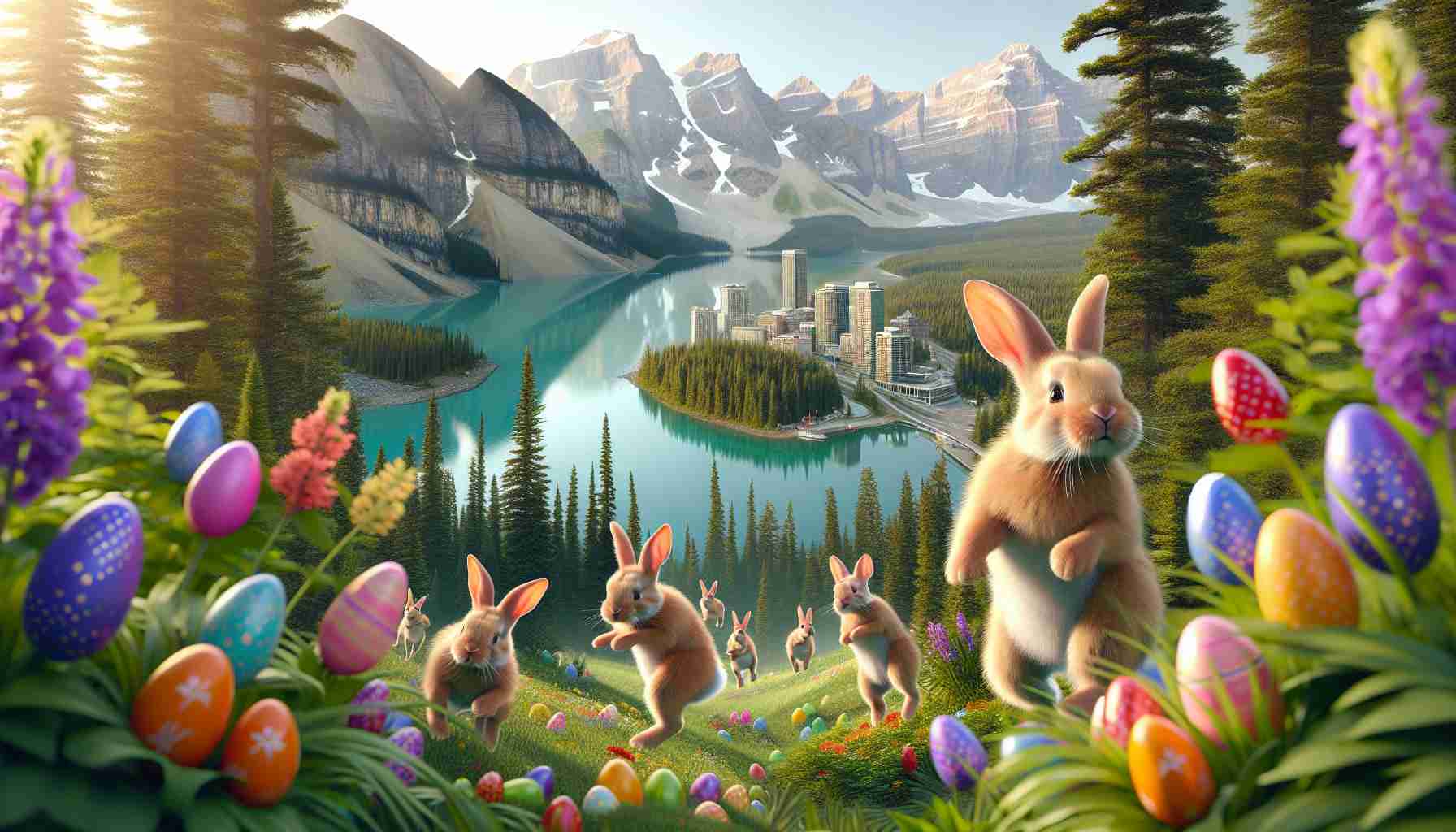Recently, a Canadian history podcaster took an innovative approach to celebrate Easter by using artificial intelligence to create unique Easter Bunnies for each province and territory. The result was a collection of diverse and captivating bunnies that captured the attention of thousands of people on social media.
From British Columbia’s fashionable, plaid-clad bunny wearing hipster glasses against a stunning mountain backdrop to Quebec’s impeccably-dressed bunny enjoying a cup of coffee on a trendy patio, each bunny had its own distinct charm. Even Nunavut’s Easter Bunny, dressed in a parka and standing in the tundra under the mesmerizing northern lights, showcased the uniqueness of Canada’s territories.
Among the collection, a moody fishing bunny representing Nova Scotia and an older, distinguished beer-loving bunny from Newfoundland also stood out. These bunnies garnered admiration and sparked conversations among the audience, with many expressing their love for the representation of each province.
However, one bunny caught the attention of many, and not necessarily for positive reasons. Manitoba’s Easter Bunny, depicted in the driver’s seat of a worn-out pickup truck, appeared somewhat disheveled and possibly rabid. The unconventional portrayal generated a mix of shock, confusion, and laughter among viewers. Despite the divided opinions, the creator of these AI-generated bunnies, Craig Baird, explains that he intentionally includes one bunny that sparks discussions and gets people talking.
Baird, a former journalist and creator of the Canadian History Ehx podcast, believes in using innovative approaches to engage people in Canada’s history. Through his podcast and social media presence, Baird strives to foster curiosity and interest in Canadian history. His previous campaigns, such as creating a Santa Claus for each province and reimagining Canadian politicians as rock stars, have garnered significant attention and started meaningful conversations.
When asked about the unique portrayal of Manitoba’s Easter Bunny, Baird clarifies that the AI was simply instructed to create an anthropomorphic Easter Bunny in a pickup truck in a field. The resulting depiction may be unconventional, but Baird appreciates the character it represents – a hardworking individual who may appear tired after a long day’s work on the farm.
The AI-generated Easter Bunnies serve as a reminder of the vastness and diversity of Canada. By using artificial intelligence to create these unique characters, Baird hopes to spark curiosity and encourage discussions about Canada’s history. Whether it’s through his podcast or social media, Baird’s goal is to make learning about Canadian history engaging and enjoyable for all.
FAQ:
Q: How were these AI-generated Easter Bunnies created?
A: The Canadian history podcaster, Craig Baird, instructed the artificial intelligence to create anthropomorphic Easter Bunnies representing each province and territory in Canada.
Q: What was special about Manitoba’s Easter Bunny?
A: Manitoba’s Easter Bunny stood out due to its unconventional portrayal in a worn-out pickup truck, appearing disheveled and possibly rabid. This depiction sparked discussions and received varied reactions from the audience.
Q: What is the purpose behind these AI-generated bunnies?
A: Craig Baird aims to engage people in Canadian history by using innovative approaches. The AI-generated bunnies serve as a way to spark curiosity, encourage discussions, and make learning about Canadian history enjoyable.
The use of artificial intelligence to create unique Easter Bunnies for each province and territory in Canada has demonstrated the potential for AI in the creative industry. This innovative approach by Canadian history podcaster Craig Baird showcases the versatility of AI and its ability to generate diverse and captivating content.
The market for artificial intelligence in the creative industry is on the rise. As AI technology continues to advance, more industries are recognizing its potential to enhance creativity and generate unique content. The use of AI in creating Easter Bunnies is just one example of how AI can be utilized to produce engaging and original content.
According to market forecasts, the global AI market is expected to reach $190 billion by 2025, with various industries adopting AI technologies for a wide range of applications. In the creative industry specifically, AI has the potential to revolutionize content creation by automating repetitive tasks, generating unique ideas, and providing innovative solutions.
While the use of AI in content creation has its benefits, there are also concerns surrounding its impact on traditional creative roles. Some argue that AI may replace human creativity and diminish the value of human input. However, proponents of AI in the creative industry argue that it can be a powerful tool for enhancing human creativity, providing new possibilities, and expanding the boundaries of artistic expression.
To delve further into the topic of AI in the creative industry, you may find the following related links informative:
How Artificial Intelligence Is Transforming The Creative Industry
The Creative Economy and the Fourth Industrial Revolution
By exploring these resources, you can gain a deeper understanding of the impact of AI on the creative industry and the potential it holds for future innovation.
The source of the article is from the blog exofeed.nl

